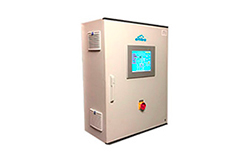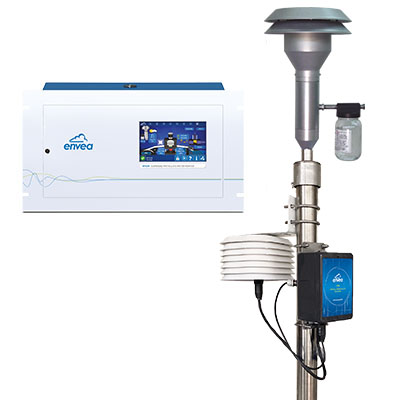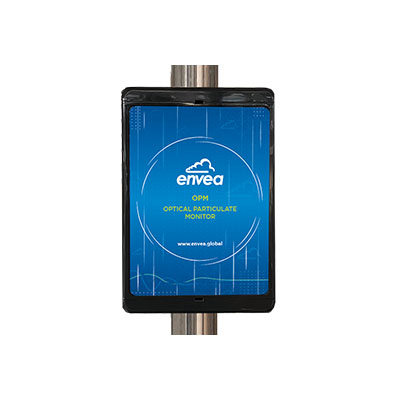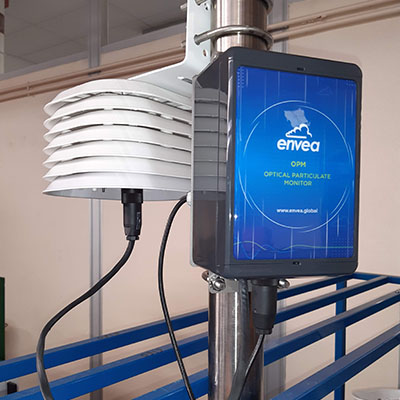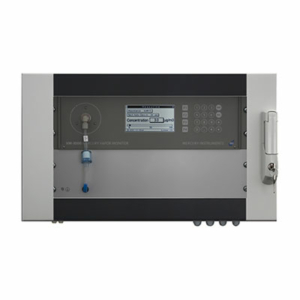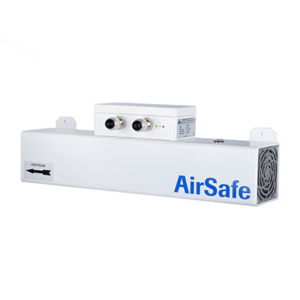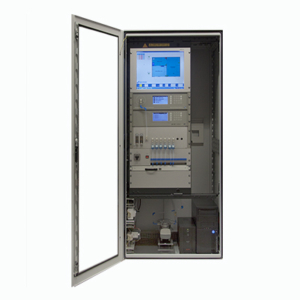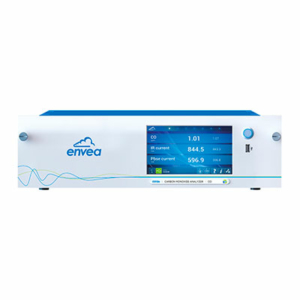Analyseur hybride pour la mesure des particules
Analyseur hybride utilisant la méthode ISO 10473 SRM et la technologie optique pour la mesure automatique et en temps réel des poussières fines PM10, PM2.5 et PM1.
La méthode de mesure normalisée ISO 10473 par jauge bêta de l’analyseur MP101M permet, lorsqu’elle est couplée le module optique OPM, de mesurer en continu et simultanément la concentration des particules fines.
L’instrument d’atténuation bêta est conforme à la norme EN 16450 pour les normes européennes PM10 et PM2.5. Certifié QAL1 par le TÜV, le MP101M est également approuvé comme Federal Equivalent Method (FEM) par l’US EPA pour la surveillance continue des particules en suspension PM10 et PM2,5.
- Surveillance précise de particule PM10, PM2,5, PM1 par jauge béta.
- Indication optique en temps réel sur la concentration massique des PM10, PM2,5, PM1 (μg/m3) via une entrée indépendante
- Features & Benefits
- Main applications
- Technical Specification
- Options & Accessories
- Principle of operation
- Downloads
- True volumetric air flow control with 3 atmospheric pressure and temperature sensors
- Sampling flow-rate continuously regulated to the atmospheric temperature and pressure: reduces evaporation artefacts of volatile compounds (mandatory for PM2.5 according to EU regulations)
- Automatic calibration of the real time optical module (OPM) to the reference measurement (ß gauge)
- Flow calibration possible during the measurement
- Built-in reference gauge for calibration: no need for factory re-calibration
- Calibration screen for atmospheric pressure sensors
- Regulated Sampling Tube (RST) compliant with CEN PM10 and US-EPA standard: sample not affected by seasonal or geographical factors and avoids evaporative losses of semi-volatile particles
- Fibreglass tape with 3 years of autonomy of continuous sampling with daily cycles (1200 cycles)
- Low activity C14 sealed flat source with analyzer lifetime duration
- Rugged instrument, not sensitive to vibration, humidity, temperature…
- New: On board web server compatible with any internet browser. ENVEA Connect™ user interface with on-line help for the display, configuration, maintenance, diagnostics or software updating of the analyser, remotely, from any PC, tablet or smartphone.
- Ambient air quality monitoring
- Indoor dust monitoring
- Working places
| MP101M Technical specifications | |
|---|---|
| Measured parameter | PM10, PM2.5, PM1, TSP |
| Technology | Beta Ray Attenuation |
| US-EPA Approval / QAL 1 Certification | YES |
| Measurement ranges | up to 10 000 μg/m3 |
| Measurement units | µg/m3 |
| Lower Detectable Limit (2σ) | 0.5 μg/m3 (24h average) |
| Sample flow rate | 1 m³/h |
| Sampling pump | External (vacuum pump) |
| Temperature range | +5°C to 40°C |
| Data storage | Unlimited |
| Included I/O | LAN/USB/WIFI/AO |
| Weight (Kg) | 15.2 (+pump: Picolino 4.6Kg / KNF 9.4Kg) |
| Dimensions mm (LxWxH) | 360.5 x 483 x 266 |
| Chassis | 19″ Rack, 3U |
| Pressure and temperature compensation | YES |
| OPM Technical specifications | |
|---|---|
| Technology | Light scattering (*) |
| Max. concentration | 0-1000 μg/m3 |
| Range of size | 0.3-10 μm |
| Lower detection limit | 1 μg/m3 |
| Temporal resolution | 1 second |
| Dimensions (WxDxH) | 230 x 370 x 200 mm |
| Flow | 2.5 L/min |
(*) Light scattering technologies applied to particle mass concentration measure can be affected by aerosols chemical composition and atmospheric conditions & should be subject to operator interpretation.
- OPM module for optical real-time measurement
- US EPA and EU-CEN compliant sampling inlets
- Temperature-regulated sampling tube (RST): 1 m, 1.5 m, 2 m, 2.75 m, compliant with CEN PM10 Directive
- Max 2 ESTEL electronic boards with:
– 4 independent analog inputs / outputs
– 4 remote control inputs
– 6 dry contacts outputs - External pump assembly: diaphragm (9.5kg), rotary vane (7kg)
- Easy to install span calibration module for automatic and programmable calibrations
- Field connection kit for leak and zero test (on RST tube)
- Laboratory connection kit for leak and zero test (on MP101M)
- Bead flowmeter for leak test
- HEPA filter for zero test
Low energy beta rays are absorbed by collision of dust, whose number is proportional to density. Absorption is thus a function of the mass of the irradiated material, independently of its physico-chemical nature.
Combination of both technologies provides simultaneously approved particulate measurement PLUS real-time indication of PM10, PM2.5 and PM1.
